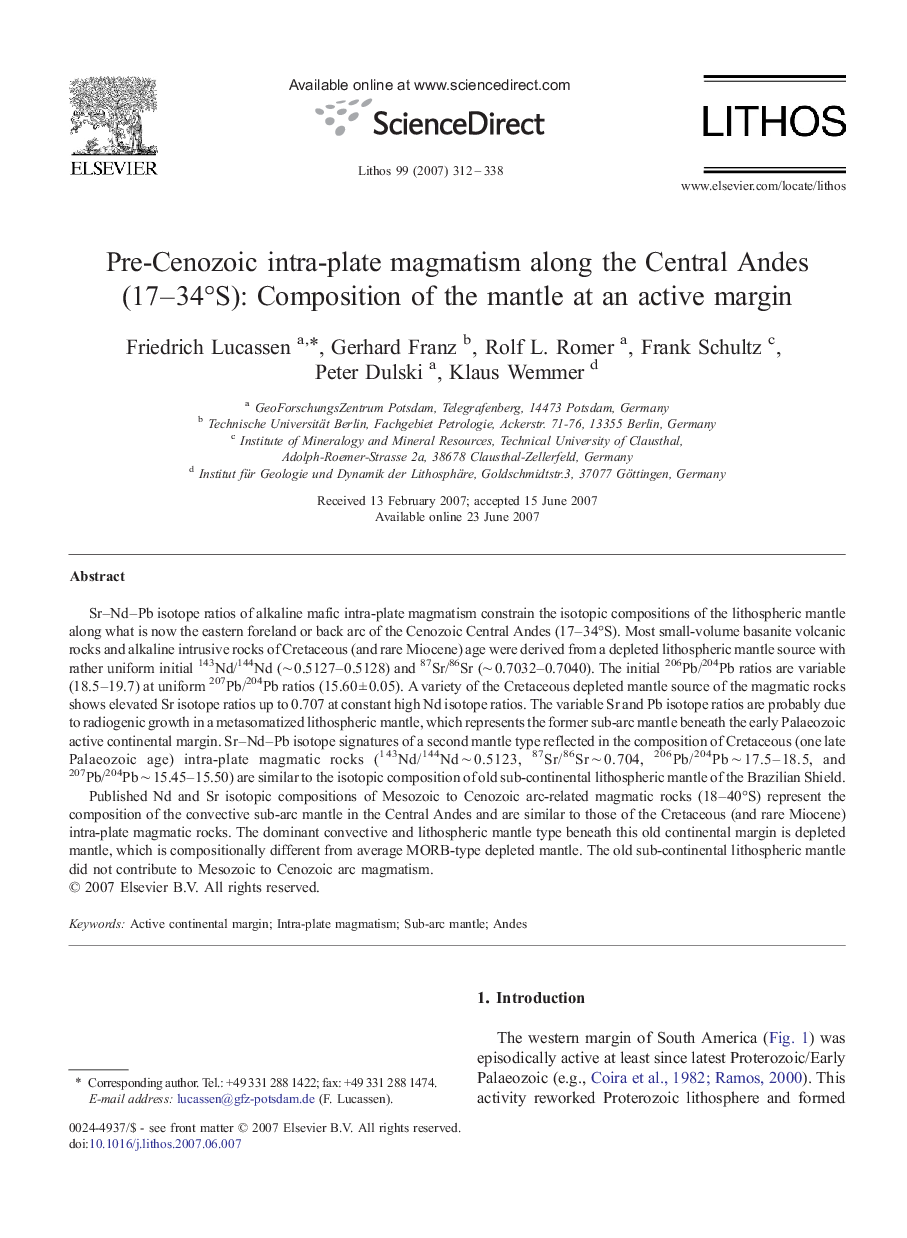| Article ID | Journal | Published Year | Pages | File Type |
|---|---|---|---|---|
| 4717699 | Lithos | 2007 | 27 Pages |
Sr–Nd–Pb isotope ratios of alkaline mafic intra-plate magmatism constrain the isotopic compositions of the lithospheric mantle along what is now the eastern foreland or back arc of the Cenozoic Central Andes (17–34°S). Most small-volume basanite volcanic rocks and alkaline intrusive rocks of Cretaceous (and rare Miocene) age were derived from a depleted lithospheric mantle source with rather uniform initial 143Nd/144Nd (∼ 0.5127–0.5128) and 87Sr/86Sr (∼ 0.7032–0.7040). The initial 206Pb/204Pb ratios are variable (18.5–19.7) at uniform 207Pb/204Pb ratios (15.60 ± 0.05). A variety of the Cretaceous depleted mantle source of the magmatic rocks shows elevated Sr isotope ratios up to 0.707 at constant high Nd isotope ratios. The variable Sr and Pb isotope ratios are probably due to radiogenic growth in a metasomatized lithospheric mantle, which represents the former sub-arc mantle beneath the early Palaeozoic active continental margin. Sr–Nd–Pb isotope signatures of a second mantle type reflected in the composition of Cretaceous (one late Palaeozoic age) intra-plate magmatic rocks (143Nd/144Nd ∼ 0.5123, 87Sr/86Sr ∼ 0.704, 206Pb/204Pb ∼ 17.5–18.5, and 207Pb/204Pb ∼ 15.45–15.50) are similar to the isotopic composition of old sub-continental lithospheric mantle of the Brazilian Shield.Published Nd and Sr isotopic compositions of Mesozoic to Cenozoic arc-related magmatic rocks (18–40°S) represent the composition of the convective sub-arc mantle in the Central Andes and are similar to those of the Cretaceous (and rare Miocene) intra-plate magmatic rocks. The dominant convective and lithospheric mantle type beneath this old continental margin is depleted mantle, which is compositionally different from average MORB-type depleted mantle. The old sub-continental lithospheric mantle did not contribute to Mesozoic to Cenozoic arc magmatism.
